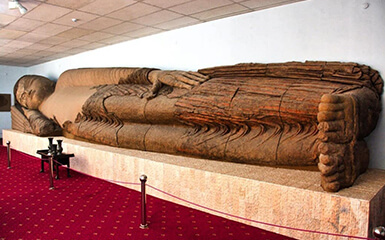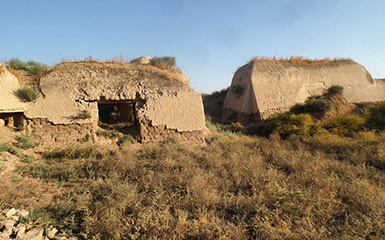Kok Gumbaz
Ajina Teppa
Ancient Panjakent
Anzob Tunnel
Beshkent Qala
Childukhtaron
Khazrati Shokh
Mug Teppa
Gharm Chashma
Hisor Historical
Haji Yaqub mosque
Hazrati-Bobo complex
Lake Iskanderkul
Kalai-Khumb
Karatag
Karon
Khishtin caravanserai
Khorog
Khulbuk
Lake Karakul
Abdullatif Sultan
Madrasai Kuhna
Abu Abdullah Rudaki
Khoja Mashhad
Khudoyor Valami
Makhmudi Azam
Mir Sayyid Ali Hamadani
Muhammed Bashoro
Sheikh Muslihiddin
Nurek Mountain Lake
Pamir
Sarazm
Sari-Khosor
Seven Lakes
Shirkent
Chiluchorchashma
Takht-i Sangin
Ajina-Teppa

Ajina-Teppa is a Buddhist monastery from the 7th and 8th centuries, which is located in southern Tajikistan. To the west of it is the provincial capital Qurghonteppa in the Vakhsh Valley, to the north the ancient settlement of Chorgul Tepe. In 1999, Ajina-Teppa was put on the tentative list as a UNESCO cultural world heritage site.
Before the excavations began, it was already apparent that the foundation of the complex consisted of two piles of stones up to 100 m wide and around 5 m high, under which right-angled inner courtyards emerged. Rooms, cells and corridors started from two places. Some sanctuaries, such as a (sleeping) parinirvanian 12 m high Buddha figure (according to other sources, it is 14 m) as well as clay figures were lifted, wall paintings uncovered and finally a stupa was recovered. The architecture and decorations of the Ajina-Teppa were fused with Indian elements and local traditions of ancient Kushana (Toharistan). The large statue of a reclining Buddha, excavated in 1966, was brought to Dushanbe along with numerous painting fragments and sculptures. The reclining Buddha, restored from many individual parts, has been on view in the National Archaeological Museum in Dushanbe since 2001. After the Taliban blew up the Buddha statues in Bamiyan in Afghanistan in March 2001, this is the largest preserved pre-Islamic Buddha statue in Central Asia.
A wall separated the two buried places from each other. The higher, south-eastern part of the facility was 19 × 19 meters and had a bowl-shaped depression. This was the actual monastery. The north-western part, on the other hand, was characterized by steep sides and encircling narrow sinks. It housed the stupa and served various religious purposes. The monastery was made of rammed earth (pachsa) and unfired adobe bricks, which were placed on top of each other in blocks and had the typical sizes of 52 × 26 × 10 centimetres for the time. Hundreds of found Sogdian copper coins from the second half of the seventh and the beginning of the 8th century allow the time of origin of the complex to be narrowed down even better. It was used for about 100 years. The monastery was destroyed during the Arab campaigns of conquest (737-50) and was henceforth unused. It was not until the late 8th century that the ruins were once again used as dwellings and factory shops. Both parts of the building faced each other, each with an aivan (portal-like vestibule).

